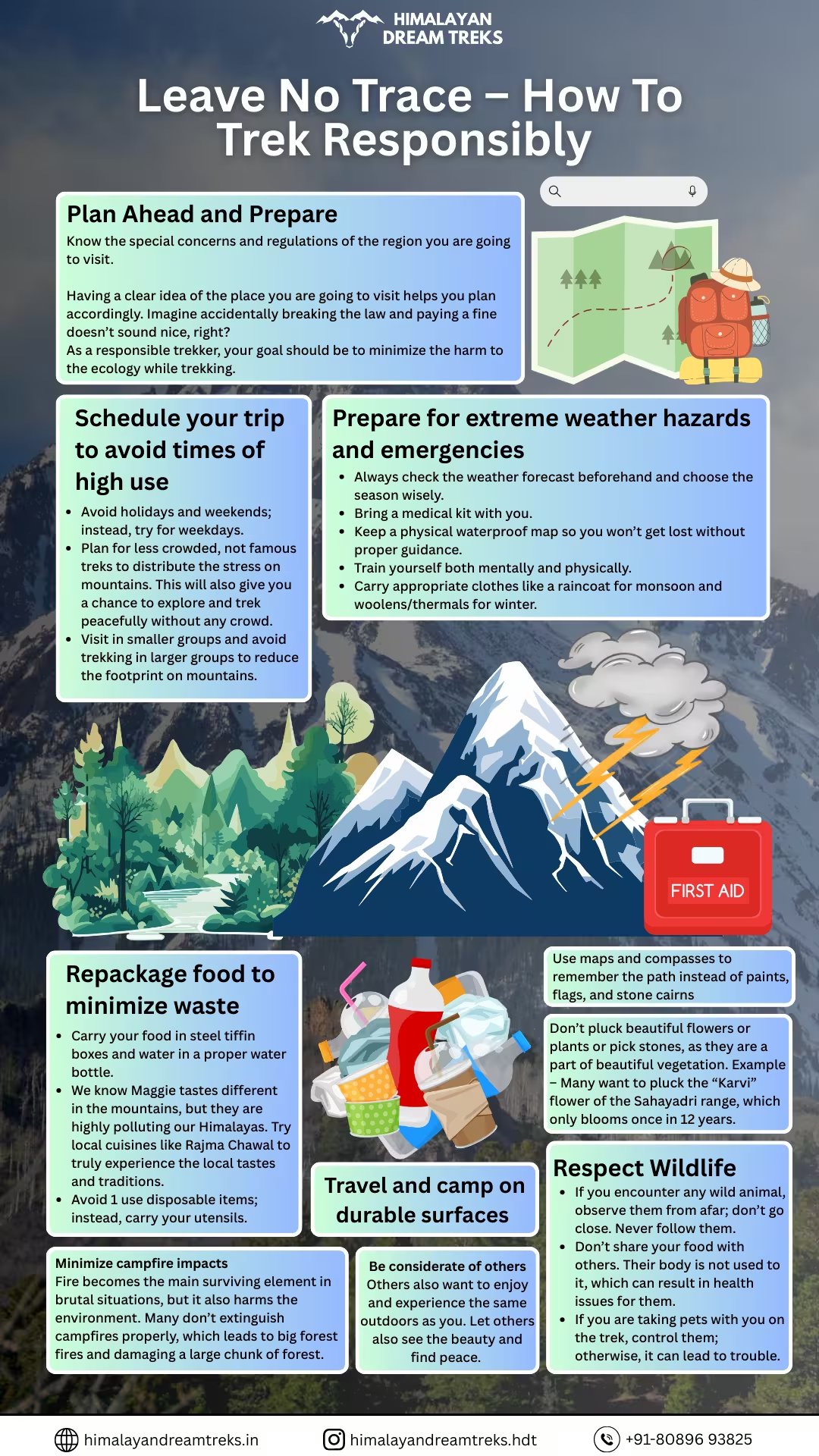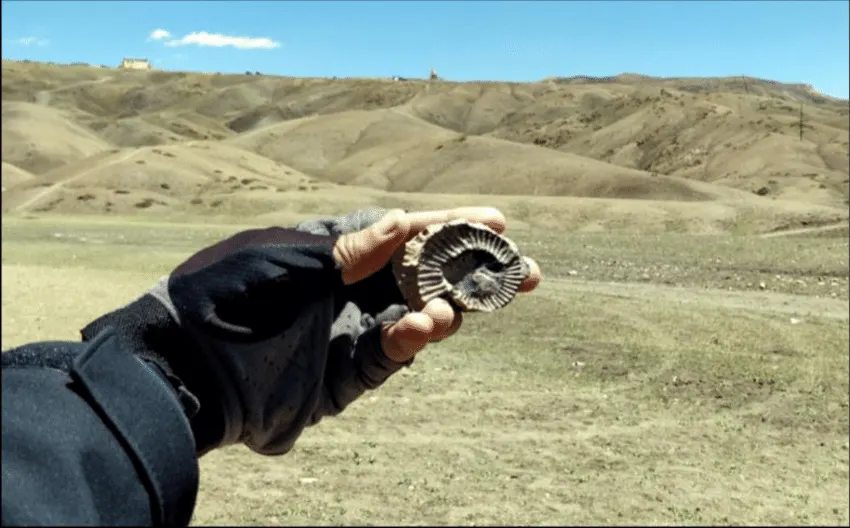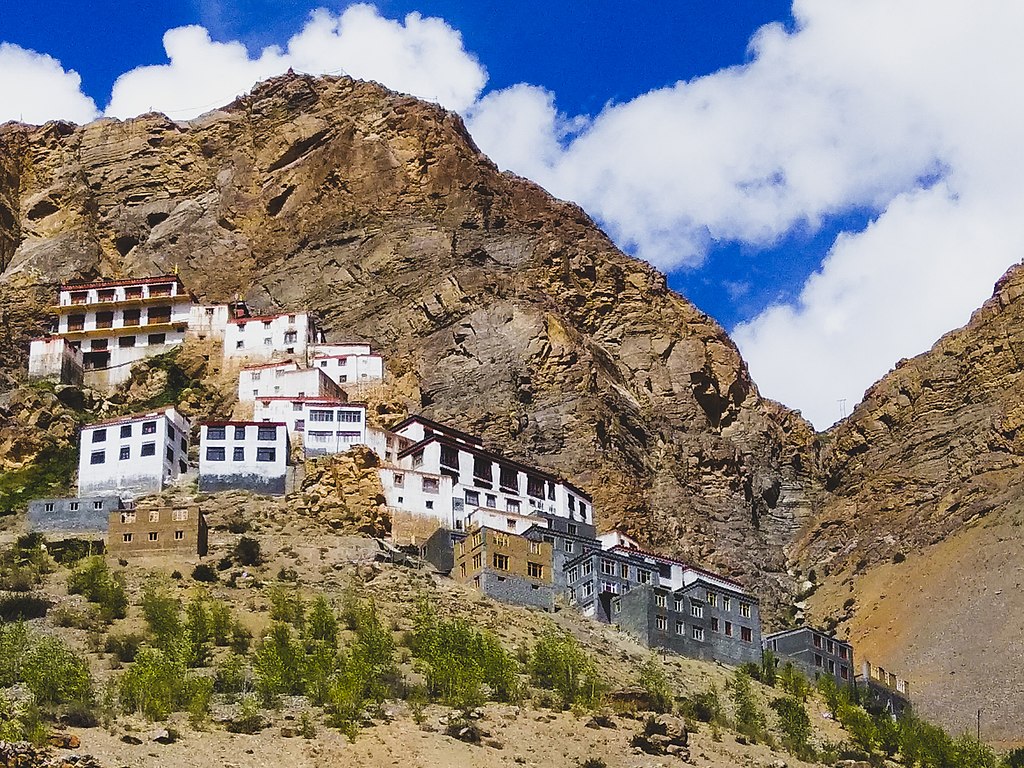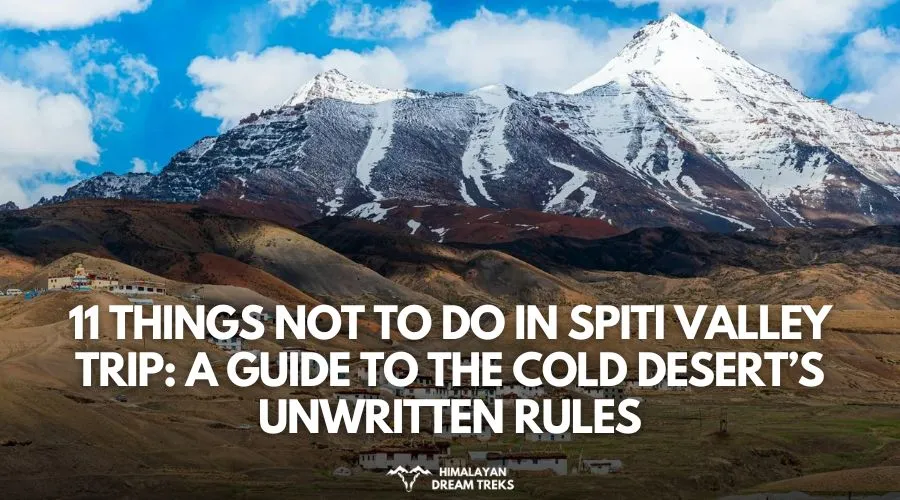The majestic Himalayas whisper a promise of adventure, and perhaps no name resonates louder among Indian travelers than Spiti Valley. It is often called the ‘Middle Land, ‘ a wind-sculpted expanse of mountain desert where spirituality meets raw, untamed nature. From the ancient murals of Tabo Monastery to the crescent charm of Chandratal Lake, a Spiti Valley trip is a journey that changes you, from within.
But here is the truth that glossy travel magazines often leave out: Spiti is not your average hill station getaway. It demands respect, preparation, and a commitment to its unique rhythm. Many travelers, especially those embarking on their first epic Spiti Valley road trip, make certain costly mistakes that can turn a spiritual quest into a logistical nightmare.
Table of Contents
A Foolproof Guide for Spiti Valley Adventures
We’ve watched the vlogs, read the heartbreaking traveler accounts, and spoken to the locals who live and breathe the high-altitude life. This article is your ultimate guide, framed not by what you should do, but by the eleven most crucial things you absolutely must avoid doing. Skip these pitfalls, and your adventure into Himachal’s breathtaking ‘cold desert’ will be flawless. So, settle in, take notes, and get ready to absorb the unwritten rules of the Spiti wonderland:
1. Do Not Ignore the Whispers of Acute Mountain Sickness (AMS)
This is, without a doubt, the single most dangerous mistake a tourist makes on a high-altitude trip. You might be the fittest person in your city circle, a dedicated runner, or someone who hits the gym every day, but Acute Mountain Sickness (AMS) doesn’t discriminate. When you travel quickly from the plains to altitudes exceeding 12,000 feet, your body is instantly thrown into an oxygen-deprived environment. Many first-timers dismiss early symptoms, a slight headache, mild nausea, or fatigue, as mere tiredness from the long drive. Do not make this mistake. If you have breathing issues, always do the full circuit as it will help you acclimatise.

Risk Factor: Ignoring AMS is like challenging the mighty mountains themselves. That little headache can rapidly escalate into severe symptoms like vomiting, confusion, or difficulty breathing, which are signs of life-threatening conditions like High Altitude Cerebral Edema (HACE) or High Altitude Pulmonary Edema (HAPE). Spiti is remote; medical facilities are basic, mostly concentrated around Kaza, and reaching definitive medical care can take hours. Travelers must understand that taking a tablet like Diamox (Acetazolamide, consult your doctor first) is a preventive measure, not a sign of weakness. Move slowly, stay hydrated (water, not packaged juice or aerated drinks), and if the symptoms persist, the only treatment is immediate descent. A failed trip due to descent is far better than a failed health due to stubbornness. Remember, acclimatization is key to truly enjoying the spiritual peace of places like Key Monastery and the stunning views from Kunzum Pass.
Rohan’s Costly Ego: An AMS Lesson
I remember meeting a young couple, Priya and Rohan, in Kaza. They rushed their itinerary from Manali. Rohan, a marathon runner, dismissed his mild headache on day one as simply ‘tunnel fatigue.’ By midnight, he was disoriented and sick. They had to immediately hire an emergency jeep at a huge cost to descend rapidly to Rampur, cutting their trip short and losing all their booking money. His solemn words to me were: ‘The mountains showed me no mercy for my ego.’
2. Do Not Enter Spiti Valley from the Manali Side First
For the adrenaline junkies and those short on time, the Manali to Kaza route seems like a tempting shortcut. Google Maps might show it as the relatively faster way from Delhi or Chandigarh, but experienced travelers and locals strongly advise against making this your entry point into Spiti. Why? It’s all about altitude gain.
Risk Factor: If you start from the Shimla side (the Shimla-Kaza route), your journey is a gradual ascent. You move from the low altitude of Shimla/Narkanda, slowly gaining height at Kinnaur (like Sangla or Kalpa), before finally reaching higher villages like Nako and then Kaza. This progressive increase allows your body 3 to 4 days to naturally adjust to the thinning air;a gentle introduction to the Himalayas.
The Manali route, however, involves a massive, sudden jump in elevation. After driving through the Atal Tunnel, you quickly ascend towards Batal and then cross Kunzum Pass (15,060 ft) before descending slightly to Kaza. This rapid gain shocks the body, making you extremely susceptible to AMS (see point 1). Vlogs frequently show travelers arriving via Manali feeling severely sick on day one, thus ruining the core days of their trip. Save the Manali-Kaza stretch for your exit from the valley, when your body is already well acclimatized after spending days in Spiti. Always choose the Kinnaur (Shimla) side for entry, ensuring your adventure starts on a stable, safe foundation.
3. Do Not Attempt to Rush the Itinerary (Minimum 9 Days Required)
We Indians love an ambitious itinerary;the race to tick off every sight in the shortest possible time. However, trying to cram the entire Spiti Valley trip into 5 or 6 days is a recipe for disaster and exhaustion. Spiti is vast, remote, and geographically unforgiving. The distances might look small on the map (for instance, the stretch from Kaza to Chandratal Lake), but the roads are nothing like the highways of the plains.
Risk Factor: The roads are mostly unpaved, rocky, often cut into sheer cliffs, and frequently crossed by high-volume water streams caused by glacial melt. A 100-kilometer stretch can easily take 5 to 6 hours, especially if you encounter a landslide or a traffic jam due to road construction. By rushing, you not only risk your safety by pushing speed limits but also completely miss the essence of the place. You will spend all your time driving, leaving no energy to truly soak in the unique culture of villages like Hikkim (home to the World’s Highest Post Office) or the serene atmosphere of Pin Valley National Park. A minimum of 9 to 10 days is essential for the complete circuit, starting from Shimla, spending adequate time in Kaza and its surrounding villages, and then exiting via Manali, ensuring rest and time for unavoidable delays. You must build in buffer days. The mountains operate on their own clock, and trying to impose your city deadlines on them is the fastest way to get stressed and sick.
4. Do Not Rely Solely on Digital Payments and City-Based Mobile Networks
We live in the age of UPI and digital wallets, but the Himalayas still operate on an older currency: physical cash. A critical error travelers make is assuming that mobile network coverage will be widespread or that every homestay will accept digital payments or cards. This is far from the reality in Spiti.
Reasons: Once you leave Kinnaur, especially beyond Reckong Peo or even Kaza, mobile network coverage drops dramatically. Only BSNL (and sometimes Airtel) offers sporadic connectivity, and high-speed data is a luxury, not a given. This means no Google Maps for navigation (download offline maps!), and more importantly, no quick digital transfers. The handful of operational ATMs are usually only in Kaza, and they often run out of cash due to infrequent replenishment and high withdrawal volumes from travelers. You will need cash for fuel (the one pump in Kaza can be busy), for homestays in remote villages like Komik or Langza, and for local transport. Always carry enough hard cash for at least 4-5 days while exploring the heart of the valley. Being cash-rich means you stay stress-free and can easily support the local economy.
The Kibber Cash Crisis
During my stay in Kibber, the local homestay owner, Tenzin, narrated a story about a group who arrived late and needed a substantial amount for accommodation and petrol. They had assumed they could pay via UPI, but with zero network and the nearest working ATM over 70 km away in Kaza, they were entirely reliant on Tenzin’s goodwill to lend them cash, which, thankfully, he did. It was a stressful lesson in being financially prepared and remembering that not all places in India are digitally connected yet.
5. Do Not Litter or Disrespect the Fragile Ecosystem
Spiti Valley’s stark, moon-like beauty is globally famous precisely because it has remained relatively untouched by excessive commercialization. However, with the surge in tourism, the threat of garbage; especially non-biodegradable plastics, has become a severe concern. The people of Spiti treat their environment, their bhumi (land), with profound reverence, and as guests, we are bound to do the same. Do not litter, under any circumstances. Do not toss wrappers, plastic bottles, or cigarette butts out of your vehicle.

Reasons: Spiti lacks the comprehensive waste management infrastructure found in larger cities. If you generate waste, especially plastic or wrappers from packaged foods, you must follow the cardinal rule of high-altitude travel: Carry Your Own Trash Back. Keep a dedicated trash bag in your vehicle, and dispose of it only when you reach a major town like Kaza or back on the plains. Respecting the ecosystem extends beyond littering; avoid using excessive soaps or detergents near water sources, and consciously minimize your use of plastic products throughout your Spiti Valley road trip. This cold desert is a delicate balance; one piece of plastic can take decades to degrade, poisoning the soil and water that sustain the local community.
6. Do Not Underestimate the Harshness of the Mountain Sun and Cold
Many travelers mistakenly assume that because Spiti is a cold desert, the sun is weak. On the contrary, at altitudes above 10,000 feet, the air is thin, and the atmosphere provides minimal protection from UV radiation. Forgetting to pack and regularly use sunscreen (SPF 50 or higher) is a mistake that results in severe sunburn, tanning, and long-term skin damage, visible in almost every traveler who returns ill-prepared.
Risk Factor: Weather in the Lahaul-Spiti region is notoriously unpredictable. Even if you visit during the peak summer months (June to September), temperatures can plunge to near-freezing or below 0°C at night, especially at high-altitude camping sites like Chandratal Lake. Tourists often pack light, thinking daytime warmth is enough. Do not pack inadequate clothing. Always carry thermal wear, fleece jackets, waterproof and windproof outer layers, woolen caps, gloves, and sunglasses (essential for protecting eyes from the harsh sun and reflected light off the snow). Layering is the only key to survival and comfort in Spiti’s diurnal temperature swings. The intense combination of cold air and intense sun also means lip balm is critical, as chapped and cracked lips are a painful and inevitable side effect of neglecting this small detail.
7. Do Not Go Hunting for Fossils or Trespass Near Sacred Lakes
Spiti Valley is not just a destination; it’s a sacred land steeped in Buddhist and ancient Himalayan culture. There are two specific things related to this culture and nature that tourists must avoid to maintain sanctity and ecology.
Reasons: First, the villages of Langza and Hikkim are renowned for being treasure troves of marine fossils, remnants of when the Himalayas were submerged under the Tethys Sea millions of years ago. Enthusiastic tourists, seeking a unique souvenir, often hunt for these fossils or buy them from local sellers. Do not take back fossils. This practice depletes the natural heritage of the region. As many travel documentaries and local guides stress, you are disturbing a site of geological and historical importance. Take photographs, but leave the fossils where they belong.


Second, the beautiful high-altitude lakes like Chandratal Lake and Suraj Tal are considered sacred by the locals. Do not enter the lakes or pollute their waters. Many travel vlogs show people attempting to dip their feet or even bathe. This is strictly prohibited. Respect the sanctity of these water bodies. Find your peace sitting on the banks, witnessing the majestic reflection of the peaks, but never disturb the pristine water. The spiritual belief in the area ties the purity of these waters directly to the well-being of the land and its people.
8. Do Not Indulge Heavily in Alcohol or Smoking
The celebratory nature of a great road trip often involves alcohol, but mixing drinking and high altitude is a dangerous gamble. Do not consume alcohol excessively in Spiti. Alcohol acts as a diuretic, increasing dehydration, and more crucially, it suppresses the respiratory system. Both dehydration and suppressed breathing are major factors that accelerate the onset and severity of Acute Mountain Sickness (AMS). Your blood alcohol concentration (BAC) rises faster and the effects last longer at high altitudes.
Reasons: While tempting for many travelers, smoking is strongly advised against. The air already contains significantly less oxygen, and smoking only exacerbates the oxygen deprivation, making your body struggle even harder. Many villages and areas around monasteries strictly forbid smoking. Travelers who ignore this advice often experience debilitating headaches and nausea, effectively sidelining them for days. If you must travel to Spiti, limit or, ideally, abstain from intoxicants to ensure your body functions optimally and you can truly enjoy the unparalleled beauty of the region. Save the celebratory drinks for when you are safely back on the plains.
9. Do Not Drive or Ride During Night Hours
Spiti Valley’s reputation for challenging roads is well-earned. The roads connecting villages like Kaza to the rest of the circuit; whether heading towards Pin Valley or over Kunzum Pass,are often difficult to deal with. They are narrow, lack guardrails in many places, and are subjected to frequent rockfall and ice patches. Do not attempt to drive or ride a motorbike after dark.
Reasons: There are absolutely no streetlights once you leave the confines of a main town like Kaza. Navigating the sheer cliff edges, crossing water streams, locally referred to as nalas, that swell up in the late afternoon and evening, and dodging random boulders becomes exponentially more dangerous in the pitch darkness. Even powerful headlights are not enough to reveal sudden road damage or the extent of a deep water crossing, known to swallow whole tires if approached incorrectly. Plan your daily travel to start early, ideally by 8 AM, and target reaching your accommodation or campsite well before sunset (around 5 PM in summer). Rushing the final stretch in the dark is one of the most common causes of accidents and vehicle damage recorded on the Spiti Valley road trip circuit.
Siddharth’s Nala Nightmare
A biker friend, Siddharth, shared his terrifying experience crossing a nala (water stream) near Batal on his way to Chandratal. He decided to push on after 6 PM, miscalculating the distance. The glacial melt increases dramatically late in the day, turning the stream into a torrent, and his bike stalled mid-crossing. He spent three hours in near-freezing water, eventually needing help from a passing truck. He now says, “Never trust the sun setting late; the mountains wake up aggressively after 4 PM, and the water flows like a monster.”
10. Do Not Disregard Local Culture or Monastic Etiquette
Spiti is the heart of Tibetan Buddhism in India, often referred to as ‘Little Tibet’. The culture here is deeply rooted in peace, quiet reverence, and a profound respect for the lamas and local traditions. As Indian tourists, we are guests in their land, and showing respect for their customs is paramount. Do not behave rudely or obnoxiously, and never disrupt the peace.

When visiting the monasteries; the likes of Key Monastery, Tabo, or Dhankar; remember that these are not tourist attractions; they are active places of worship and learning. You must:
- Maintain silence inside the prayer halls (Gompas).
- Always walk clockwise around Stupas, Mani Walls, and Chortens, as per Buddhist tradition. This is a subtle yet crucial sign of respect.
- Ask permission before taking photos of monks, children, or locals, especially close-up portraits. Many prefer privacy, and invading that space is considered disrespectful.
- Dress modestly, covering your shoulders and legs when visiting religious sites.
Your positive interaction with the locals, who are known for their warm hospitality, contributes to a mutual respect that ensures the sustainability of tourism in the region. Their world is one of quiet contemplation; ensure your visit remains consistent with that spirit. Always approach the elders with a polite ‘Juley’ (hello/thank you) and a genuine smile.
11. Do Not Over-Pack Luggage That Requires Trolleys or Duffle Bags
This point might sound trivial compared to AMS or road safety, but it’s a common practical mistake that frustrates travelers right at their high-altitude accommodation. For a Spiti Valley trip, especially if you plan to stay in homestays in remote, high-altitude villages like Komik, Langza, or Kibber, or if you plan to camp near Chandratal Lake, do not carry wheeled suitcases or large, hard-shell duffle bags.
Reasons: The terrain in and around the villages is rocky, dusty, and often involves navigating steep, uneven footpaths that vehicles cannot access directly. Hauling a heavy trolley bag up a steep, thin-aired path to a homestay at 14,000 feet will drain your energy quickly, exacerbating fatigue and potentially inviting AMS symptoms. The consensus among seasoned Spiti travelers is absolute: Pack light, and use a backpack. Backpacks distribute weight better, leave your hands free for balance, and are infinitely easier to manage when dealing with difficult mountain terrain or helping load/unload vehicles on uneven ground. Think ‘trekker’ efficiency, not ‘luxury hotel’ baggage, to ensure your journey is smooth and your energy is preserved for exploration. The difference between struggling with a trolley in the dust and simply hoisting a backpack onto your shoulders is stark, particularly when the very air makes manual labor difficult.
Bonus Tip: The Spiti Homestay Experience
The caretakers and attendants would try their best to help you, but you need to respect their limitations. There might be a huge difference between the reels you watch before visiting, and the reality. Real time situations might not always allow you to have everything you desire, and that is exactly what mountains teach you – to submit to the circumstances and keep your desires aside. A cheat code is to consider yourself a guest at any of your relative’s place instead of expecting the hotel experience. In addition, you should not expect it to be a luxury trip due to the location. Some ingredients or amenities will NOT be available and you need to accept that.
- Your bucket list might also include sitting and vibing around a bonfire, but you cannot be completely sure of the same, as it is a bit hard to find wood in these areas. Make sure you do not create fuss regarding the same.
- Do not create chaos at odd hours, and respect the owner’s privacy as well as hospitality.
- As far as hot water and other basic amenities are concerned, patience is the key. It takes time for them to arrange everything as resources are scarce. Please respect their efforts and use the available resources wisely instead of wasting hot water or ordering food unnecessarily.
Conclusion
The Spiti Valley trip is an unparalleled experience, a true jewel of the Himalayas. Though the list of mistakes is not exhaustive, we have tried to cover the non negotiables. By avoiding these eleven common mistakes, you’re not just planning a safer trip; you are also ensuring that you are a responsible and respectful traveler. Embrace the challenges, respect the culture, and savor the silence of the cold desert. Do your planning meticulously, pack wisely, and let the sheer, raw beauty of Spiti cleanse your soul. When you return to the plains, you won’t just have memories; you will have a profound sense of achievement and a mesmerising story that truly belongs to the high peaks.

Leave a Comment